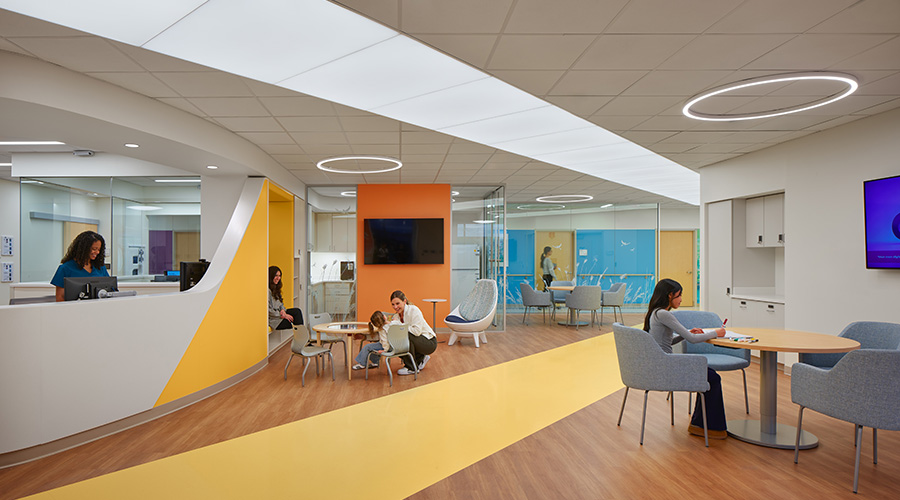Hospital administrators face increasing demands to improve their patients' and staffs' experiences, even as they reduce energy and other operating costs. Some leaders are also juggling the need to address the community health and facility impacts of heat waves, drought, forest fires, flooding and other results of more extreme weather. As a result, leader's first questions to facility managers are often, ‘How are we doing now?’ or ‘How can we improve?’ and ‘What will we save?”
A group of Boston hospitals may have found one secret to improved sustainability performance, according to a recent report issued by the Boston Green Ribbon Commission's (GRC) Health Care Working Group (GRC-HC). The report, "Metropolitan Boston Health Care Energy Profile for 2011-2013," analyzed over 18,000 energy and greenhouse gas (GHG) records covering 24 million square feet of Boston hospitals in a first-in-the-nation, metropolitan sector-wide database. Using the U.S. EPA Portfolio Manager and a custom website, Boston hospitals have joined forces to efficiently compile sector data, learn from trends, and enable benchmarking for continuous improvement.
The report shows energy conservation and efficiency investments have cut sector energy use by 6 percent between the start of 2011 and the end of 2013, eliminating the annual GHG emissions of 7,486 passenger vehicles. This reduction was achieved despite expanding their real estate footprints and patient care services, and offsetting the sector's history of 1.5 percent annual increases in energy use. Cost savings are conservatively estimated at $11.9 million, enough to pay for healthcare for 1,055 Massachusetts Medicare enrollees, or buy eight MRIs.
The GRC is comprised of 33 chief executives representing healthcare, real estate, higher education, utilities and other business power-houses, who work with Mayor Martin Walsh to implement the city’s Climate Action Plan. The plan seeks to increase efficiency, reduce greenhouse gas emissions and prepare for climate change. Virtually every hospital joined the effort: sharing best energy practices, putting multiple years of energy performance into a common data base, and supporting analysis of the data.
"What's remarkable is that leading, highly competitive, medical institutions have come together to share their energy data for the greater good," said John Cleveland, executive director of the GRC and president of the national Innovation Network for Communities. "We hope this helps inspire health care sectors in cities nationwide to follow Boston's lead."
This collaborative approach has allowed researchers to identify several areas where Boston hospitals have made notable progress in energy efficiency, conservation and GHG reduction, including:
• The sector reduced absolute, weather and space adjusted total energy use (electricity, gas, chilled water, oil and steam) by 227 billion Btu.
• Electricity use dropped 25.4 million kWh, 6.47 percent compared to business as usual (BAU), or 6,797 metric tons of carbon dioxide equivalent (MtCO2e).
• Natural gas use dropped 1.2 million therms, 14.75 percent BAU or 6,367 MtCO2e.
• GHG reductions for all fuels was 5.7 percent, or 14,286 MtCO2e.
Even as the sector overall is reducing its carbon footprint, three sector leaders have either already achieved, or will achieve, deep GHG reductions. Massachusetts General Hospital reached 35 percent reduction in 2014, Boston Medical Center is on track for a 45 percent reduction by 2020; and Brigham & Women's Hospital is committed to reaching 35 percent by 2020.
"We are deeply committed to improving the quality of life for our patients, our employees and the community," said Gary Gottlieb, MD, co-chair of the GRC Healthcare Working group and president and CEO of Partners Healthcare, which includes Massachusetts General Hospital, Brigham and Women's Hospital, Spaulding Rehabilitation Hospital and others.
"By using resources more efficiently and reducing energy consumption, we can reduce costs and mitigate the effects of climate change — leaving a better Boston for our children to enjoy." In addition, Partners wholesale purchase of electricity from 30% renewable energy and large hydro power sources is enough to help lower the entire sector's GHG emissions by about 5 percent.
Kate Walsh, co-chair of the GRC-HC and CEO of Boston Medical Center added, "Individual hospitals and the sector are making great progress, demonstrating cost savings. Reinvesting the savings in more and better clinical care, in research AND in more energy efficiency is critical to maintaining our momentum. Even though BMC is on track to reduce our greenhouse gas emissions by 45 percent by 2020, we all have a great deal of work to do to reach our collective goal of an 80 percent reduction by 2050. But with incentives to invest in the capital and operational improvement, hospitals can continue to reduce our energy consumption which is important for our fiscal health and the health of all of us," she said.
Developed for the GRC’s Health Care Working Group (GRC-HC) by its coordinator, Health Care Without Harm, the data tracks the sector's collective progress towards the City of Boston’s goal of a 25 percent reduction in GHG emissions by 2020, and 80 percent by 2050.
"Boston is proud to be home to the world's top medical institutions for patient care, research, and now, sustainability," said Mayor Walsh. "These institutions understand that taking care of people also means taking care of our environment." "This report demonstrates that Boston's hospitals are making sizable contributions to reaching the city's carbon reduction goals," said Brian Swett, Boston's chief of Environment, Energy and Open Space. "Many of these institutions are committing to even further reductions through the Mayor's Carbon Cup."
"Everyone's health is impacted by environmental conditions. GRC-HC participants are helping the climate and our air quality because it's part of our mission to do no harm. We know community health starts with primary prevention," said Paul Lipke, of Health Care Without Harm. HCWH's co-founder and executive director, Gary Cohen added, "In the Age of Climate Change, health care has a responsibility to address its own climate footprint and lead society toward an economy powered by renewable energy. GRC-HC members are at the forefront of a national movement to integrate environmental health into our mission to do no harm."
The report highlights some distinctive facts and opportunities. Participating institutions have such a high percentage of space committed to their energy intensive, world-famous biomedical research laboratories that their total facility energy use intensity per square foot drops as density of patient beds increases. Labs' special ventilation, safety and equipment needs are driving demand for as much as twice the energy per square foot than even acute care hospitals use. Some hospitals have as much as 50 percent of their floor space devoted to labs. As a result, energy efficiency in labs is getting more attention.
Even so, one in five patient-days in Boston is devoted to specialized care for critically ill patients from around the region, nation, and the world, and this care requires higher densities of energy intensive, specialized imaging and clinical plug loads. The report demonstrates electricity demand for intensive care units is approximately two times greater than the area's typical energy demand for inpatient care.
The report can be found on both the Green Ribbon Commission's and Health Care Without Harm's websites.
Cohen is Health Care Without Harm's co-founder and president. Lipke is its senior advisor for energy and buildings.

 Contaminants Under Foot: A Closer Look at Patient Room Floors
Contaminants Under Foot: A Closer Look at Patient Room Floors Power Outages Largely Driven by Extreme Weather Events
Power Outages Largely Driven by Extreme Weather Events Nemours Children's Health Opens New Moseley Foundation Institute Hospital
Nemours Children's Health Opens New Moseley Foundation Institute Hospital Code Compliance Isn't Enough for Healthcare Resilience
Code Compliance Isn't Enough for Healthcare Resilience Ribbon Cutting Marks First Phase Completion for New Montefiore Einstein Facility
Ribbon Cutting Marks First Phase Completion for New Montefiore Einstein Facility